They both have that classic “prehistoric lizard beast” look, live in swamps, and could absolutely ruin your day if provoked.

Nevertheless, alligators and caimans aren’t quite the same animal. They’re close relatives, sure, and it’s easy to lump them together, but there are subtle (and not-so-subtle) differences in their build, behaviour, and background. If you’ve ever looked at one and thought, “Is that a gator or… something else?”—this one’s for you.
1. Caimans are generally smaller (but feistier).
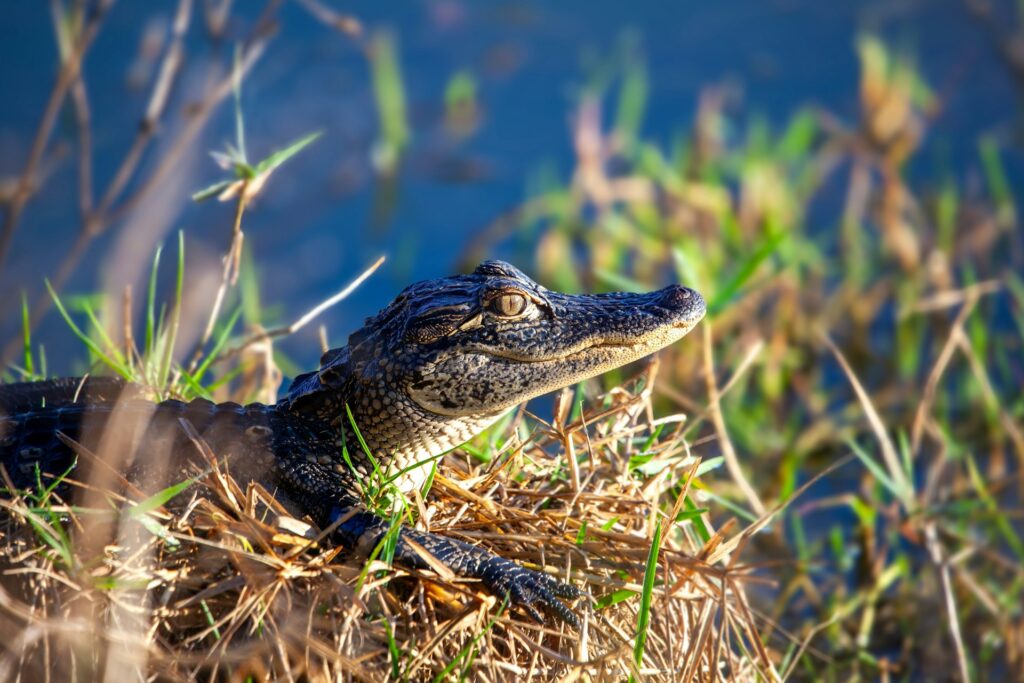
If you’re looking at a crocodilian that seems just a bit more compact and scrappy than an alligator, you might be looking at a caiman. Most species of caiman are smaller, with adults averaging between 1.5 to 2.5 metres. Alligators, especially American ones, can reach over 4 metres easily.
However, don’t let the size fool you—caimans tend to have a more aggressive streak. They’re more defensive and unpredictable in the wild, whereas gators are usually content to mind their business unless provoked.
2. Alligators have a broader, U-shaped snout.
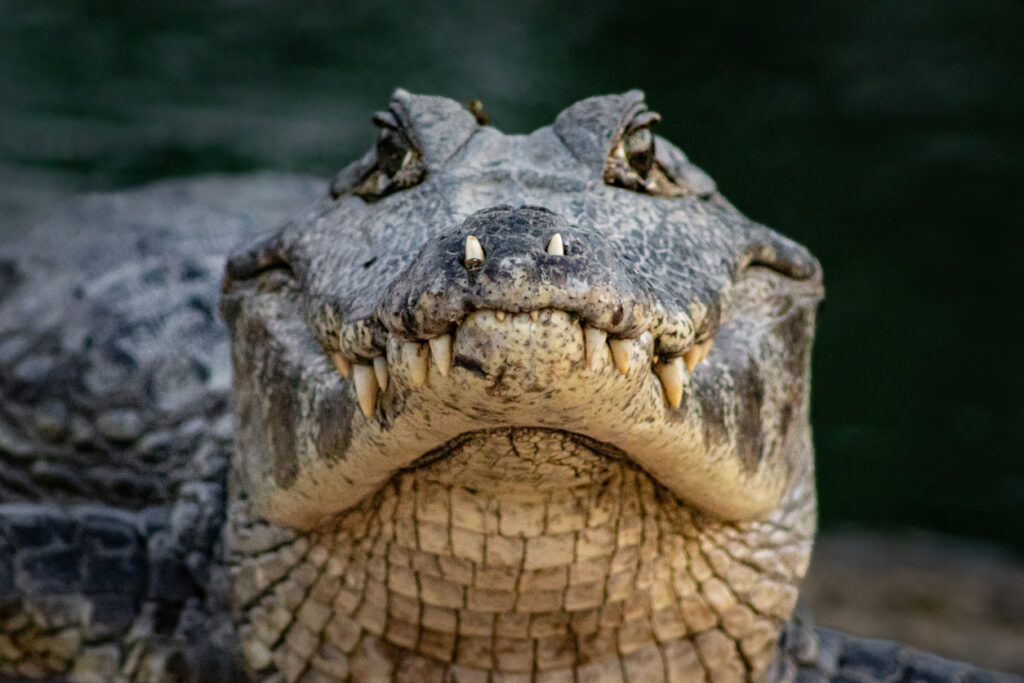
The shape of the snout is one of the easiest ways to tell them apart. Alligators have wide, rounded snouts that almost look like a shovel—perfect for crushing tough prey like turtles. Caimans, on the other hand, have a more pointed, V-shaped snout. It gives them a sleeker look and works better for snatching fish and small animals, which make up a larger part of their diet.
3. Caimans have bony ridges between their eyes.
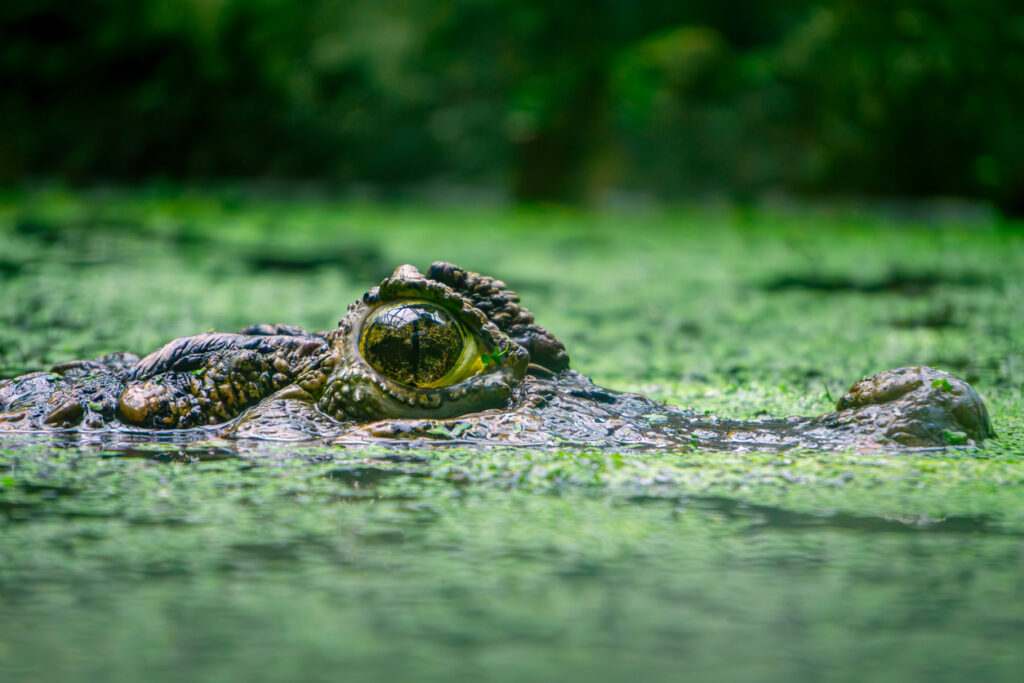
Another quick visual cue: caimans usually have a pair of bony ridges between their eyes that make them look a bit more menacing, like they’re permanently frowning. Alligators don’t have this ridge, so their foreheads look smoother and less defined. It’s a subtle feature, but once you know it, it becomes surprisingly obvious.
4. They live in different places (mostly).
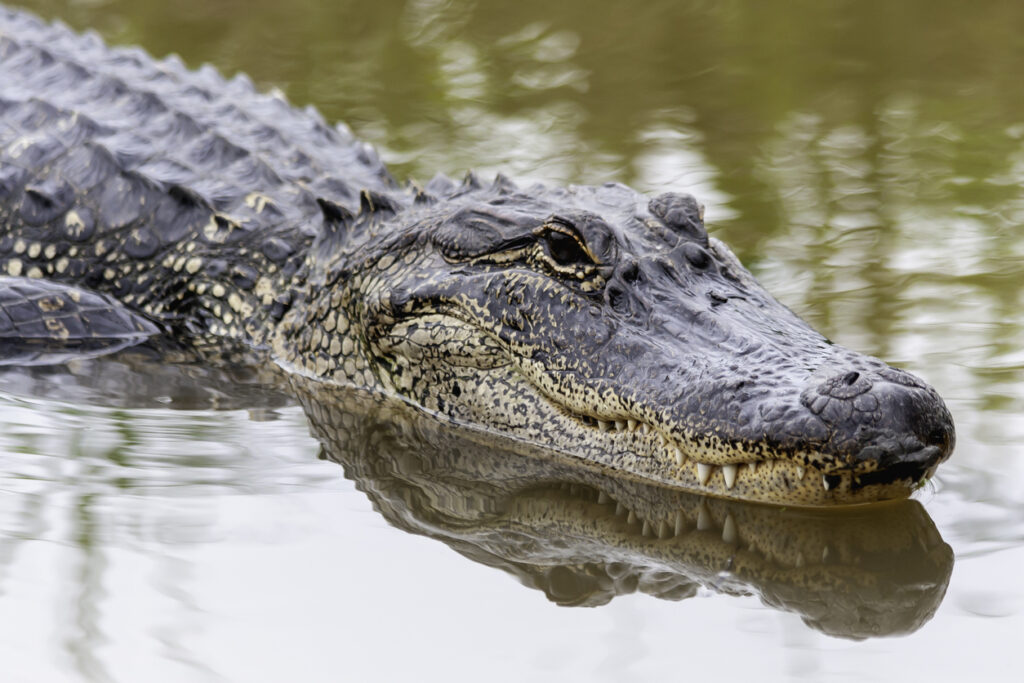
Geography is a big clue. Alligators are found mainly in the southeastern United States and parts of China (though the Chinese population is critically endangered). If you see a big black reptile in a Florida swamp, chances are high it’s an alligator. Caimans are native to Central and South America—countries like Brazil, Colombia, and Venezuela. If you’re in the Amazon and spot one, that’s almost definitely a caiman.
5. Caimans have rougher, bumpier skin.
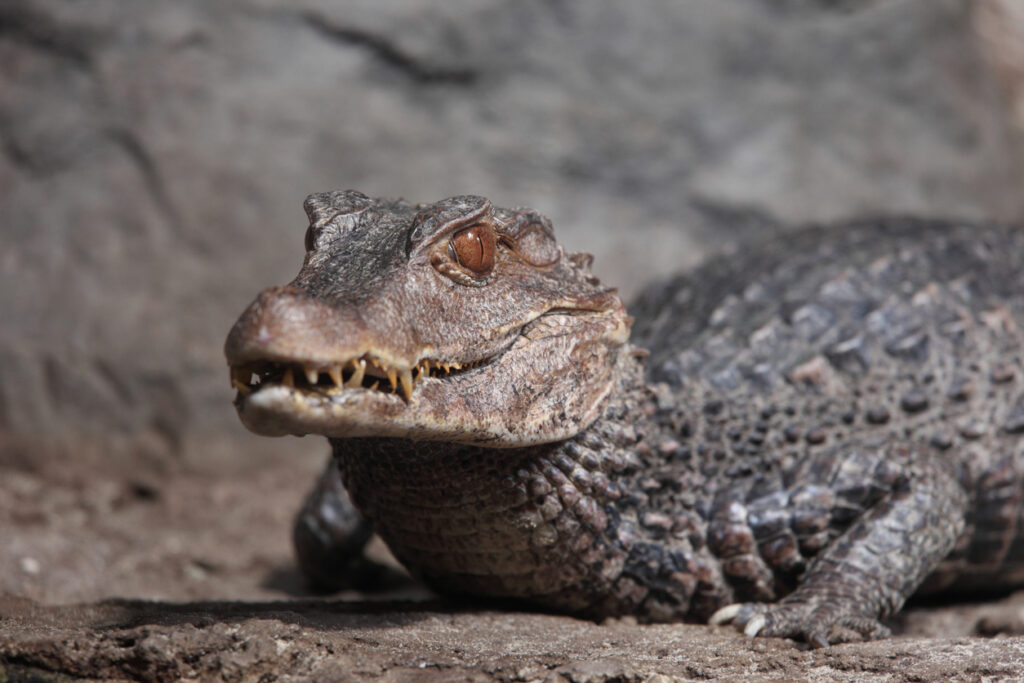
Alligator skin is still pretty rugged, but caimans take it up a notch. Their scales are harder and more heavily armoured, especially around the belly. That makes caiman hides tougher to work with for leather products (which is why they’re not farmed as much). This extra armour also gives caimans a tougher, gnarlier appearance. It’s part of what makes them look like tiny crocodilian tanks.
6. Alligators are less aggressive toward humans.

Generally speaking, alligators tend to avoid people. They’ll often retreat when approached and only get dangerous when they’re cornered or protecting a nest. Attacks do happen, but they’re relatively rare given how many gators share space with humans in places like Florida.
Caimans, by contrast, are more skittish and reactive. While they’re not out hunting humans, they’re more likely to lash out if disturbed. It’s part of why researchers consider them trickier to work with.
7. They make different sounds.
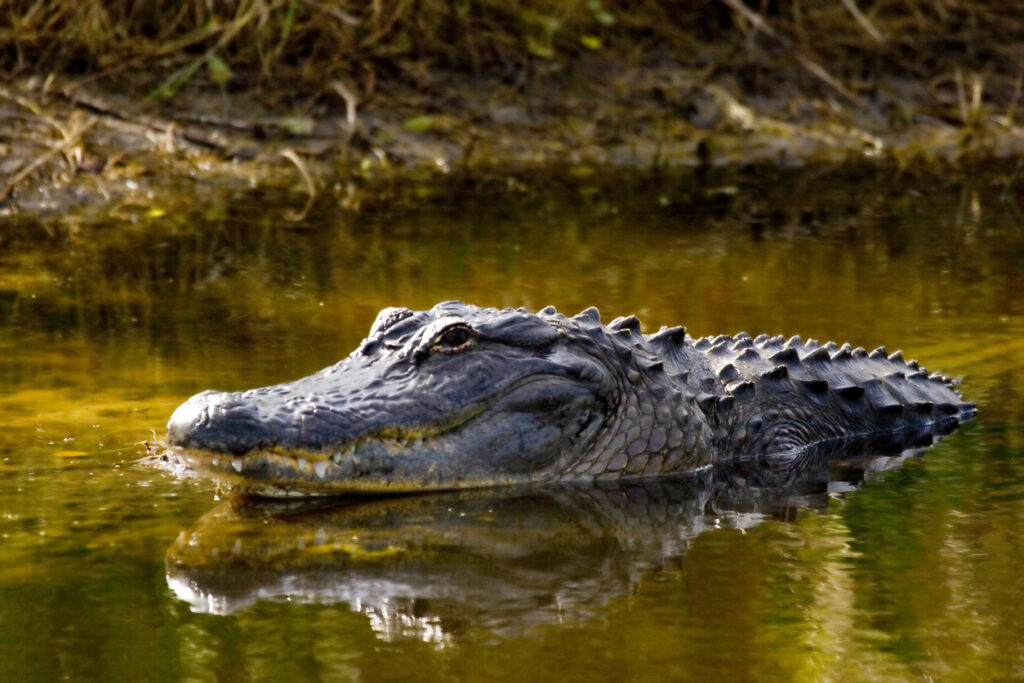
Both species are vocal, but their calls are different. Baby alligators make a high-pitched chirp to call for mum, and adults will bellow, hiss, or growl depending on the situation. Alligator bellows are deep and almost vibrating—it’s like hearing the swamp itself groan. Caimans make more guttural grunts and cough-like noises. Some species have alarm calls that sound almost like barking. If you’re close enough to hear them, though, you’re probably already too close.
8. Caiman teeth tend to stick out more.
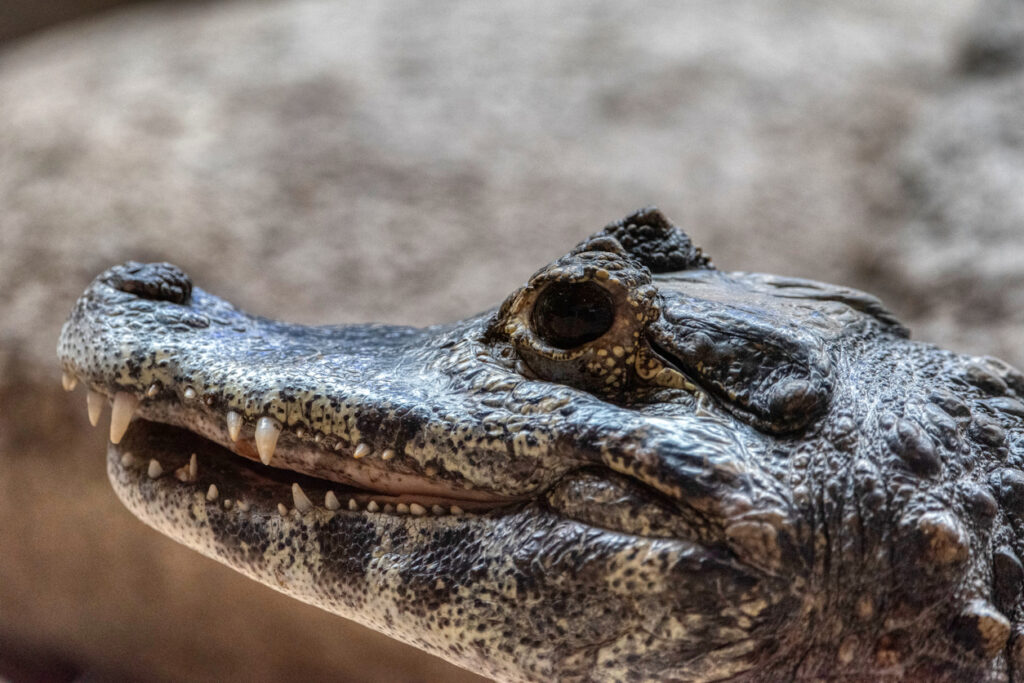
While both have impressive sets of teeth, caimans have jaws that don’t hide their lower teeth as neatly as an alligator’s does. When a caiman closes its mouth, those sharp lower teeth are often still clearly visible. Alligators, by comparison, have upper jaws that slightly overhang, hiding most of the lower teeth and giving them a slightly more “smiling” appearance—if you can call it that.
9. They grow at different speeds.
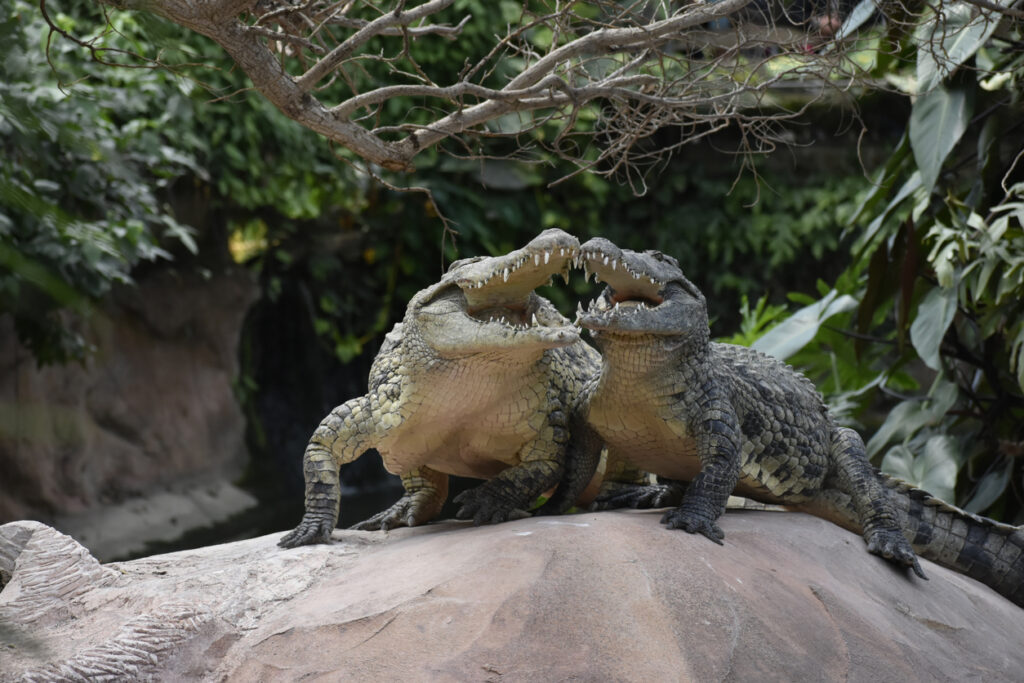
Alligators grow relatively slowly and can live 35–50 years in the wild. Caimans, on the other hand, tend to mature faster, especially the smaller species, but don’t always live as long. This difference also affects how fast they become territorial or start reproducing, which changes how they behave in the wild, especially around others of their kind.
10. Caimans outnumber alligators globally.

There are only two species of alligator—the American and Chinese. Caimans, on the other hand, have around six recognised species, including the spectacled caiman, black caiman, and dwarf caiman. This makes caimans more diverse as a group, with different sizes, behaviours, and habitats. They’ve also spread into more varied environments, from dense jungles to dry savannahs.